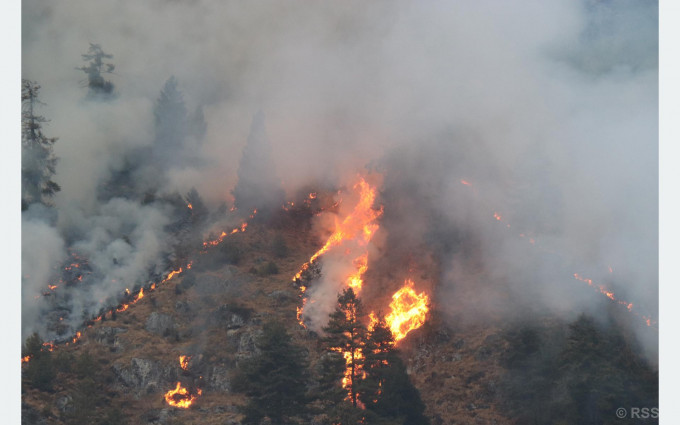Nepal's economy is showing signs of recovery amid the COVID-19 pandemic, with imports surging and lending from banks increasing in the past months, but the recent damage to crops plus a credit crunch might hold back the upward trend, officials and experts cautioned.
Along with a reduction in new coronavirus cases since late June, economic activities in Nepal have been accelerating gradually, leading to increased lending from banks and other financial institutions.
Meanwhile, the massive damage to paddy crops by floods and inundation sparked by unseasonal rainfalls in the middle of October and the banks' inability to provide additional loans to enterprises due to a shortage of loanable funds are adding woes to the struggling economy, officials and experts said.
Early this week, the Ministry of Agriculture and Livestock Development reported a loss of crops worth 8.26 billion Nepali rupees (68.58 million U.S. dollars), the highest on record, as ready-for-harvest paddy cultivated on 85,580 hectares of land was swept away or submerged in all seven provinces of the country.
Ishwori Prasad Bhandari, director of the Central Bureau of Statistics (CBS), told Xinhua that the damage to crops would influence the overall contribution of the agricultural sector to gross domestic product (GDP) in the current 2021-22 fiscal year which began in mid-July.
"Paddy production is the largest contributor, around 20 percent to the overall agricultural production," he said. "So the damage caused by floods and inundation to the production of paddy will definitely have a negative impact on the overall GDP growth."
In the 2020-21 fiscal year, the agricultural sector contributed 26.4 percent to the GDP, while the service and industrial sectors accounted for 61.1 percent and 12.5 percent, respectively, according to CBS.
The CBS had expected a 4-5 percent growth in agricultural production in the current fiscal year with good rainfalls in the monsoon season, however, the expectation has become less likely to achieve now, Bhandari said.
"Our estimate was that the economy could grow by around 5 percent in the current fiscal year combining the contributions of the agricultural, service, and industrial sectors before the latest damage to paddy crops," he said.
The Nepali government, for its part, was aiming for a growth of 7 percent in the current fiscal year, as against a projected growth of 4 percent in the previous fiscal year.
In the 2019-20 fiscal year, the South Asian country posted a negative growth of 2.1 percent, the lowest since the 1982-83 fiscal year, due to lockdowns imposed after the first wave of the coronavirus struck in early 2020.
Shankar Sharma, former vice-chairman of the National Planning Commission, told Xinhua that even though paddy crops were damaged, the overall growth might not be affected significantly because other economic activities have grown well.
"We can minimize the impact of the loss of paddy crops by increasing the production of winter crops, but the government should ensure farmers get seeds and fertilizers in a timely and adequate way," he said.
Some officials and experts are expecting the non-agricultural sector, particularly the industrial one, to perform well in the days ahead. In Bhandari's view, the service sector would recover but not robustly since tourism is still suffering from the pandemic.
The country's banking system, meanwhile, has been beset by a credit crunch for more than a month. The continuation of such a situation could hinder more investments from the private sector, thereby holding back the economic activities.
According to Nepal Rastra Bank, the country's central bank, excessive lending by Nepali banks and other financial institutions in the first quarter of this fiscal year has contributed to a shortage of loanable funds with them.
Banks and other financial institutions provided loans of 326 billion rupees (2.7 billion dollars) in the first three months of the current fiscal year, but only collected deposits of around 100 billion rupees (830 million dollars) during the period, said Dev Kumar Dhakal, spokesperson for the central bank.
The excessive lending in turn contributed to a rise in imports, according to officials and experts.
Nepal's imports grew by 63.73 percent to 478.52 billion rupees (3.97 billion dollars) during the first quarter of the current fiscal year, according to the Department of Customs.
Amid excessive lending, a number of banks have seen their credit to deposit ratio crossing the limit of 90 percent set by the central bank, making it impossible for them to lend further without increasing deposits. As a result, the interest rates have gone up in recent weeks.
"The banks' failure to provide extra loans plus high-interest rates may slow down the economic recovery," Sharma said. "But we should also prevent excessive lending to prevent overheating of certain sectors of the economy, which needs to be balanced." Enditem
READ ALSO:










